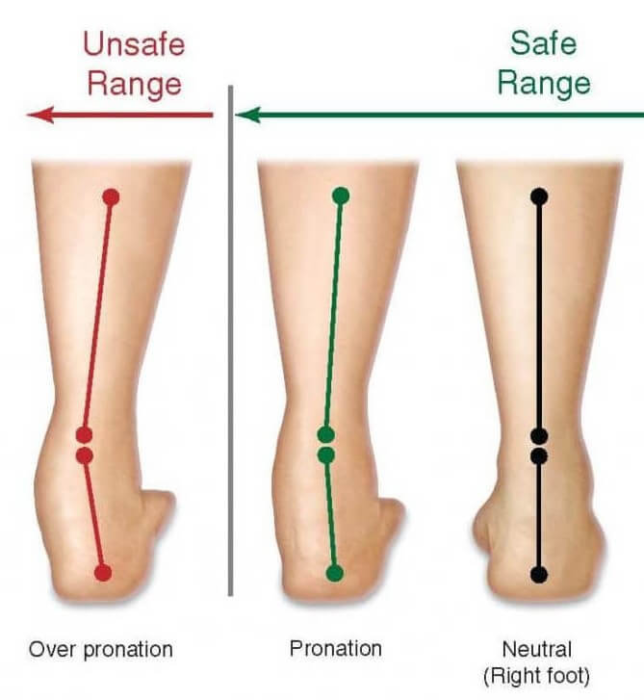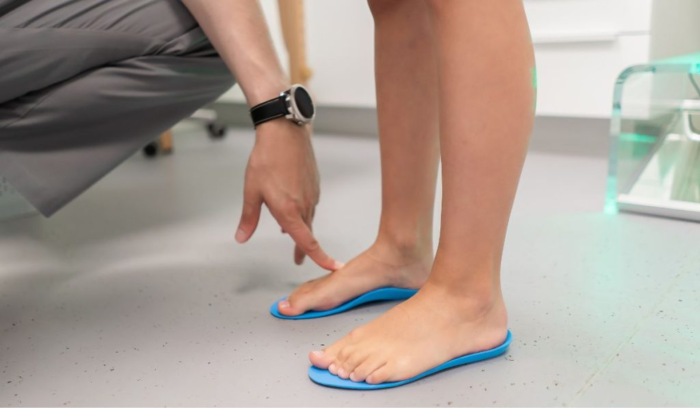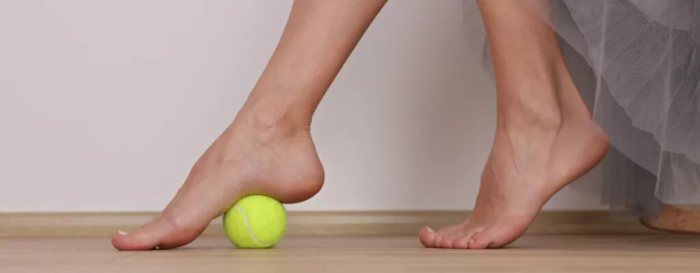Pronated flat feet are a common condition where the arches on the inside of the feet get flattened. It can make the entire soul come into contact with the ground. It can occur because of over-pronation, and it is a common biomechanical problem mostly faced by people with muscle weakness, obesity, and pregnancy.
Feet is an essential body part that requires great care as it acts as the foundation for the entire body and promotes support, balance, and posture. When a foot is severely pronated, it will be less shock-absorbent, less stable, and cause pain in the neck, knees, hips, and spine. It can be hereditary or can develop over time and also affect an individual’s way of walking, standing, and other activities. Flat feet mostly occur in childhood when the arches are not fully developed and can also happen in adults after any injury.

What Causes Pronated Flat Feet?
Some of the most common causes of pronated flat feet include the following:
- Foot and Ankle Injuries

Any trauma or injury to the foot, ankle, and lower leg can affect the movement and structure of the leg and can lead to overpronation or flat feet.
- Obesity
Excessive weight can put a lot of stress on the feet, and because of the load on the arches, it can lead to a condition known as flat feet.

- Muscle Weakness
Because of the natural weakness of the muscles and ligaments as people age, it can cause overpronation or flat feet.
- Genetics
If you’ve got a family history of flat feet, then there is a great possibility that you may develop flat feet.
- Improper Footwear
Wearing ill-fitted shoes that do not provide adequate support can also cause flat feet over time.

Some other conditions, such as pregnancy, nerve damage, tendon injuries, and foot structure, can also be the reason behind pronated flat feet.
Pronated Flat Feet Treatment Options
- Custom Orthotics
Custom-made insoles can provide enough support for your feet and are considered an effective treatment for pronated flat feet. Orthotics are the inserts that go inside the shoes, help support body alignment, and can reduce ankle and knee pain. To get personalised orthotics, you can consult a foot and ankle specialist who can provide you with orthotics after an evaluation of your foot and ankle area.

Happy Heels is a specialised unit of Verman Hospital that provides custom orthotics in less than 45 minutes after a detailed analysis of foot and foot scanning.
- Physical Therapy

Some stretches and exercises can strengthen the muscles, properly stretch your legs, and also support the foot arches. If you’re looking for trained physical therapist professionals, you can reach out to Happy Heels, a unit of Verman Hospital that focuses on foot and ankle physiotherapy and helps people have better foot health.
- Lifestyle Modifications
Losing excess weight can help reduce the strain and stress on the feet and also help manage the symptoms related to flatfoot. Also, high-impact activities and sports that involve repetitive pounding on hard surfaces may worsen symptoms. So, it’s better to consider low-impact exercises like swimming or cycling.
- Footwear Modifications:
Sometimes, simple modifications to existing shoes can make a significant difference. This may include adding arch supports or heel wedges to improve foot alignment.
CONCLUSION
Flat feet are a common foot condition that is caused by overpronation and can be easily treated with the help of custom orthotics, physiotherapy, and other management techniques. If you’re also dealing with this foot condition, consult Dr. Swapnil Verman, who is the best orthopaedic surgeon in Mathura, treating patients with quality care and support.

